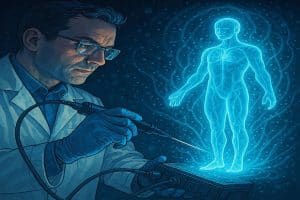- Apraxia is a Greek word which means without action. Apraxia is a neurological disorder known by a loss of the ability to perform or carry out skilled movements and gestures Apraxia of speech leaves individuals unable to consistently and correctly say what they mean We are share Symptoms Of Apraxia that helpful for you.
-
- When viewing at a diagnosis of apraxia, it’s important to rule out contributing things. We want to make sure that the language skills are intact. Language and speech are two different things. Language is the system where they have the vocabulary their understanding spoken words
- Apraxia of speech is sometimes called acquired apraxia of speech, verbal apraxia, or dyspraxia. It is a motor speech disorder.
- In a limb apraxia, some body part is affected like your arms or legs.
- How severe your apraxia is depended on what type of brain damage you have. Apraxia can happen at the same time as other speech or language problems. You may have muscle weakness in your mouth.
Table of Contents
Types of apraxia:
Ideomotor apraxia:
- In an ideomotor apraxia, the patient knows everything but not know how to do it.The patient knows what to do but not how to do it
- Ideomotor apraxia is typically demonstrated when a patient is asked verbally to perform a gesture with a limb
- People who are affected by ideomotor apraxia can still perform most automatic movements.
- Ideational apraxia is a disorder of voluntary movement in which a person mistreats objects because he has trouble recognizing the concept or purpose behind the objects.
- Patients with ideomotor apraxia show temporal and spatial errors affecting timing, sequencing, amplitude, configuration, and limb position in space
Ideational and conceptual apraxia:
- In ideational apraxia, Patient does not know what to do. This terminology can be confusing not only because definitions of ideational and conceptual apraxia vary among authors
- The disability to require out traditional motor functions, like victimization objects properly, as a result of the state of mind ensuing from an organic brain disorder.
- The inability to draw or construct simple configurations, such as intersecting shapes.
- Conceptual disorders may occur in two regions: associative knowledge and mechanical knowledge such as knowing the advantage that tools afford.
Limb apraxia:
- Limb apraxia is a common disease of skilled purposive action that is often associated with stroke and degenerative disorders such as Alzheimer Disease
- Weakness to use the arms or legs to perform earlier learned actions, such as cleaning one’s hair or hitting a ball.
- The person knows what he wants to say, but his brain has trouble planning voluntary movements of the lips, tongue, and other speech muscles in order to produce sounds or words.
Apraxia of Speech:
To speak, messages should go from your brain to your mouth. These messages tell the muscles however and once to move to form sounds. once you have Symptoms Of Apraxia, the messages don’t get through properly, due to brain injury.
. There are two types of apraxia of speech-
- Acquired Apraxia of Speech
- Childhood Apraxia of Speech
Signs of Apraxia:
If you are affected by apraxia of speech then you will have hearing problems and saying sounds correctly. This may cause you to say something very different than what you meant. You may even make up words.
- Vowel errors or substitutions
- Making errors in tone, stress, or rhythm
- Vowel errors or substitutions
- Voicing errors
- Errors vary with the complexity of articulatory adjustment
- Groping or struggling to get a word out
- Slow rate Prosodic disturbances
Treatment Of Apraxia Of Speech:
- The treatment for acquired AOS will vary depending on the severity of the signs and the victim’s own needs.
- The Audiologist may guide the patient to watch and listen to him speak a word, following which the patient is encouraged to repeat the word.
- Patients with critical symptoms of apraxia may be able to interact effectively with the use of written language or sign language. Otherwise, they may be taught to use automated hearing aids


